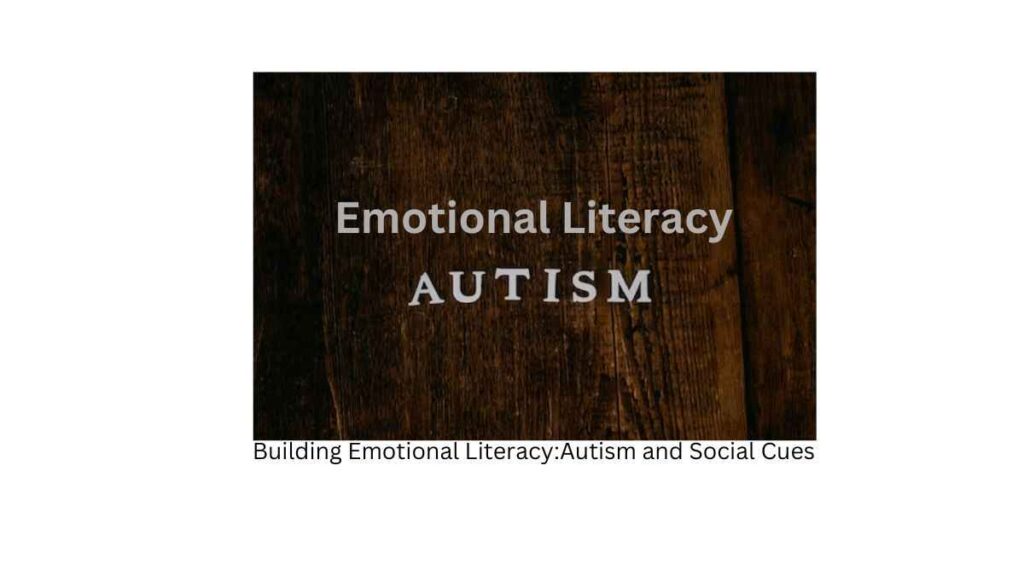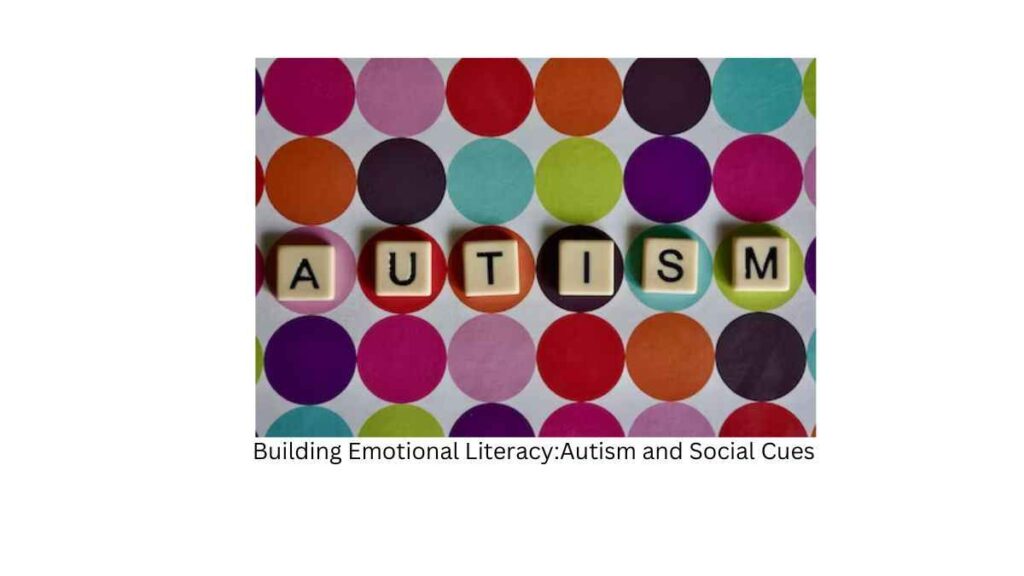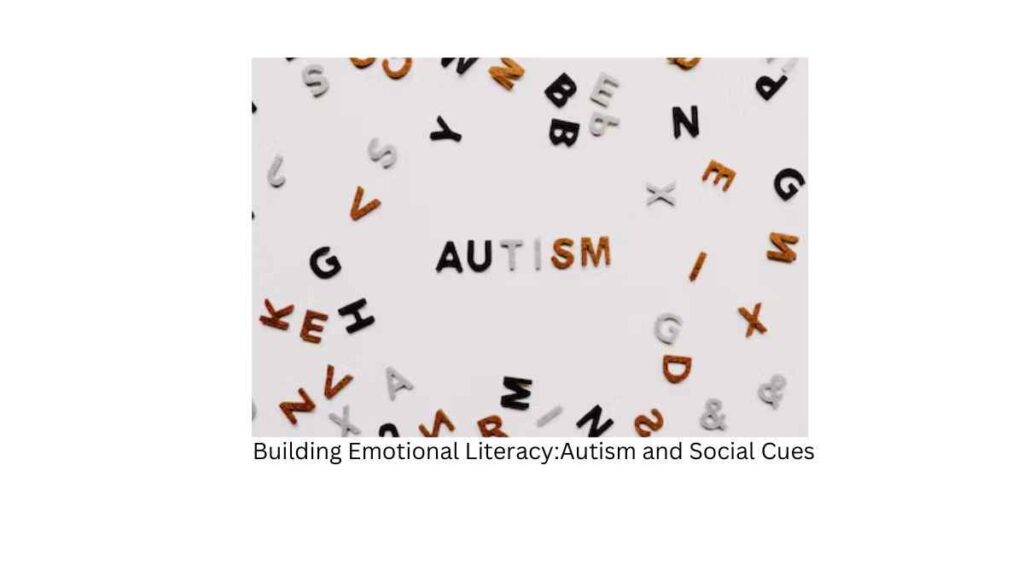Introduction:-
Building Emotional Literacy:Autism and Social Cues

Understanding and navigating the complex landscape of human emotions is a fundamental aspect of effective social interaction. For individuals with autism, developing emotional literacy and interpreting social cues can be challenging, but it is an essential skill for building meaningful relationships and fostering a sense of belonging in society. In this article, we will explore the concept of emotional literacy in the context of autism and offer strategies for building this crucial skill.
Emotional Literacy Defined
Emotional literacy, often referred to as emotional intelligence, encompasses the ability to recognize, understand, and appropriately respond to one’s emotions and the emotions of others. It involves the capacity to perceive non-verbal cues, such as facial expressions, body language, and tone of voice, and to empathize with the emotional experiences of those around us.

For individuals with autism, who may face challenges in communication and social interaction, developing emotional literacy can be a particularly significant hurdle. However, it is not an insurmountable one.
Challenges in Autism
Individuals with autism often experience difficulties in processing and interpreting social cues and emotions. They may struggle with:
- Recognizing Facial Expressions: Understanding the meaning behind various facial expressions can be challenging for people with autism. Subtle differences in a smile or a frown may not be readily apparent to them.
- Interpreting Body Language: Non-verbal communication, such as posture and gestures, can be a puzzle for individuals with autism. They might not pick up on the nuances of body language that neurotypical individuals easily understand.
- Deciphering Tone of Voice: Recognizing the emotional nuances in someone’s voice can be a formidable task. Individuals with autism may struggle to detect sarcasm or changes in tone that indicate mood or intention.
- Empathizing with Others: Empathy, the ability to understand and share the feelings of another, is a vital component of emotional literacy. Many individuals with autism have to work harder to develop this skill.
Strategies for Building Emotional Literacy in Autism
Despite these challenges, there are several effective strategies that can help individuals with autism build emotional literacy and improve their ability to understand social cues. These strategies can be used in educational settings, therapy, and everyday life:
- Structured Social Skills Training: Many specialized programs and therapists offer structured social skills training for individuals with autism. These programs break down social interactions into manageable steps and provide explicit instruction on recognizing and responding to emotions and social cues.
- Use Visual Supports: Visual supports, such as emotion cards or social stories, can be invaluable in helping individuals with autism understand and identify different emotions. These visual aids make abstract concepts more concrete and accessible.
- Role-Playing and Practice: Engaging in role-playing exercises can help individuals with autism practice recognizing emotions and social cues in a safe and controlled environment. This allows them to build skills and gain confidence.
- Teaching the “Hidden Curriculum”: The “hidden curriculum” refers to unwritten social rules and expectations that are not explicitly taught but are understood by neurotypical individuals. Explicitly teaching these unwritten rules can be immensely helpful for individuals with autism.
- Use Technology: There are several apps and software programs designed to teach emotional literacy and social skills to individuals with autism. These tools often incorporate interactive activities and visual aids.
- Encourage Perspective-Taking: Encouraging individuals with autism to put themselves in another person’s shoes can help them develop empathy. This can be done through discussions and storytelling.
- Reward Systems: Implementing a reward system for recognizing and appropriately responding to emotions and social cues can be a motivating factor. Positive reinforcement can encourage individuals with autism to practice and develop their skills.
- Supportive Environment: Creating a supportive and inclusive environment is crucial. This involves educating peers, family members, and teachers about autism and providing understanding and patience as individuals with autism work on their emotional literacy.
- Modeling and Practice in Real-Life Situations: The best way to learn is often through practical experience. Encourage individuals with autism to practice their emotional literacy skills in real-life situations, with guidance and support as needed.
Do autistic people smile at inappropriate times?
Some individuals with autism may exhibit behaviors that could be perceived as smiling at inappropriate times, but it’s important to understand that this behavior is not necessarily intentional or indicative of insensitivity. There are several reasons why this might occur:

- Sensory Sensitivity: Some individuals with autism may have heightened sensory sensitivity, and their response to external stimuli may be different from that of neurotypical individuals. What might seem inappropriate to others may not be registered as such by the individual with autism.
- Difficulty Reading Social Cues: Autism is characterized by challenges in reading and interpreting social cues. This can lead to individuals with autism smiling when they are uncertain about how to respond in a social situation. They may use a smile as a default response to mask their uncertainty or discomfort.
- Self-Stimulatory Behavior: Smiling or engaging in repetitive self-stimulatory behaviors (often referred to as stimming) is a common coping mechanism for individuals with autism. These behaviors can occur in various situations, and they may not always align with the social context.
- Misunderstanding Social Norms: Individuals with autism may have difficulty grasping the unwritten social rules and norms that dictate when it is appropriate to smile or not. They might smile in situations where others consider it inappropriate because they don’t fully understand the social expectations.
It’s crucial to approach these situations with empathy and understanding. While the behavior might be atypical or seem inappropriate to others, it is usually not intended to be disrespectful or hurtful. Rather, it reflects the individual’s unique way of interacting with the world and coping with their sensory and social challenges.
In some cases, individuals with autism can benefit from social skills training and therapy to help them better understand and respond to social cues and norms. However, it’s important to remember that every person with autism is unique, and their behavior and responses can vary widely. What’s most important is creating an inclusive and supportive environment for individuals with autism where they can feel comfortable and accepted for who they are.
Conclusion
Building emotional literacy in individuals with autism is a vital step toward helping them lead fulfilling lives and connect with others. While it may present unique challenges, with the right strategies and support, individuals with autism can make significant progress in recognizing and understanding emotions and social cues. By fostering emotional literacy, we empower individuals with autism to navigate the complexities of social interaction and form meaningful relationships, ultimately contributing to their overall well-being and quality of life.





